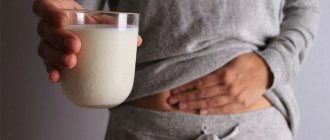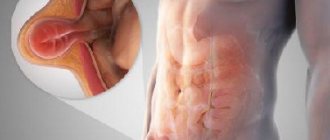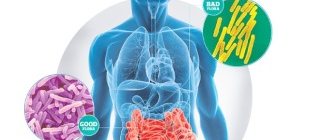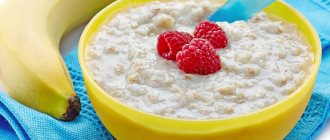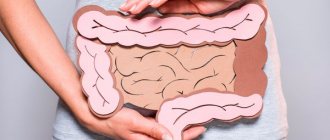Diet No. 3 is recommended for people prone to constipation due to chronic intestinal diseases during periods of subsiding exacerbations or remission. According to doctors, most problems with stool occur due to insufficient intake of natural dietary fiber into the body, and table No. 3 is designed to solve this problem. The diet for constipation practically does not limit the methods of preparing dishes; only items that are excessively fatty or have an astringent or irritating effect are excluded from the list of products.
Diet Table 3 in detail
The main cooking methods are baking, boiling, steaming, frying without forming a crust, and stewing. Here you can read about how to cook without oil. Meals in the diet are fractional, 4 - 6 times a day, in small portions. A person of average weight and height with a moderately active lifestyle should receive approximately 2000 – 2500 kcal per day. Carbohydrates should be between 250-380 grams.
Drinking in the diet Table Number 3
A special place in the Table Number 3 diet is given to liquids. In addition to the liquid on the menu, you need to drink at least one and a half liters. This can be still mineral water or cold boiled water. Jelly, cocoa, coffee, and strong tea are prohibited. It is very useful to drink drinking water on an empty stomach half an hour before breakfast - this procedure will allow the intestines to start.
Food and diet Table 3
As for products, the list of prohibited products includes:
- roast,
- fatty,
- spicy,
- strong broths,
- smoked meats,
- alcohol,
- yeast bread and fresh pastries,
- sticky cereals,
- pasta,
- beans,
- mushrooms,
- onion,
- White cabbage,
- chocolate,
- bananas, grapes.
You can eat potatoes to a limited extent. Daily salt intake should not exceed 12-15 grams.
Here you will find a list of products for this menu.
Recommendations for diet Table No. 3
Recommended:
- lean meats and fish,
- soft-boiled eggs no more than 2 pieces,
- dried yeast-free bread,
- dairy products,
- fresh vegetables, fruits and berries without a pronounced sour taste,
- compotes, juices,
- dried fruits.
Among cereals, preference is given to buckwheat and millet.
Diet Table 3 can be used continuously. Especially people whose problems are caused by a sedentary lifestyle. Eating the recommended products allows you to feel improvements already 2-3 days after the start.
The first impression from the mention of any diet is the need to limit yourself. However, the diet can be not only healthy, but also quite varied. And very tasty!
The effect of diet on the intestines
Proper nutrition helps maintain normal internal balance of the intestines. Diet number 3 for constipation is aimed at improving and stimulating the basic functions of the intestinal microflora, such as:
- synthesis of amino acids and vitamins K and C, as well as B vitamins;
- local immune defense of the body;
- enzymatic processing of dietary fiber;
- neutralization of toxins;
- maintaining the secretory activity of the gastrointestinal tract.
Diet number three restores the functional activity of the intestines, normalizes metabolic processes, improves motility and secretion of intestinal glands. The diet prevents fermentation and the formation of gases, promotes the elimination of toxic compounds, and also normalizes fluid exchange. The healing table ensures normal digestion and timely bowel movements.
Products that regulate bowel function
Various intestinal diseases can be accompanied by different and sometimes even opposite symptoms. For example, a person may suffer from diarrhea or, conversely, suffer from constipation. You can improve intestinal function with the help of certain diets and eating foods that have a laxative effect or weaken intestinal function.
To natural “ laxatives”
” include dried fruits, kefir, legumes, oatmeal and buckwheat.
They are recommended for use by people suffering from periodic constipation, even if it is not caused by intestinal diseases.
Mashed porridges, slimy soups, and foods high in tannin help the stomach work
Authorized Products
Diet No. 3 for constipation is aimed at increasing the proportion of foods that enhance colon motility, namely:
- containing organic acids in large quantities: sauerkraut, citrus fruits, fruit drinks from sour berries and fruits, fermented milk drinks;
- with a high content of plant fiber: dried fruits, bran, cereals, wholemeal bread, raw vegetables (spinach, cabbage, radishes, carrots, etc.);
- cold first courses and desserts: okroshka, beetroot soup, ice cream;
- stringy lean meat: veal, rabbit, turkey, beef;
- lean fish: hake, cod, as well as any seafood;
- compotes, weak tea, chicory, rosehip decoction, natural juices.
The diet includes the inclusion in the diet of products with a laxative effect, as well as those that stimulate intestinal motility, such as honey, grapes, sweet apples, peaches, pumpkin, dates. Softening stool is facilitated by eating foods that swell in the digestive tract and facilitate the process of bowel movement.
Dietary fiber contained in cereals, vegetables and fruits is not digested. They absorb toxins and other harmful substances and activate peristalsis. Organic acids inhibit the growth of pathogenic microflora, increase the contractility of the intestinal muscles and normalize stool.
Diet No. 3 involves eating beets, cucumbers, tomatoes, zucchini, cauliflower, and broccoli. For constipation, it is allowed to add green peas and white cabbage to the diet. It is advisable to include fresh cottage cheese, sour cream, as well as fermented milk drinks in the five-day or seven-day menu: yogurt, kumiss, fermented baked milk or drinking yogurt.
If you have problems with bowel movements, you need to eat more berries and fruits containing plant fiber and sugar. For example, nectarines, apricots, plums, melons, watermelons. It is allowed to eat mild cheeses, scrambled eggs, and cream. For sweets, it is better to choose marshmallows, marmalade, jelly, and marshmallows.
You can and should add parsley, dill, cilantro and other greens to your food. Food must be cooked in vegetable or butter. Table No. 3 is quite diverse.
Mineral deficiency
In case of intestinal diseases, the body receives insufficient minerals, but this deficiency can be replenished with the help of dairy products
. Not only do they contain a lot of minerals, but they are also easily absorbed by the body. Dairy products can provide the body with a sufficient amount of phosphorus and calcium, but one must keep in mind that not all dairy products can be well tolerated by the body in case of intestinal diseases. For example, fresh milk may be too “heavy”, and fermented milk products, due to their increased acidity, can irritate the walls of the stomach.
The most neutral and useful product for intestinal diseases is unleavened cottage cheese.
, as well as unsalted and low-fat
cheese
. These products can be an alternative to kefir and yogurt. It is only important that the products are fresh and natural, without additional spices or flavor enhancers.
What is prohibited
Article on the topic
Gas problem. How to tame flatulence Foods that provoke fermentation processes and putrefaction in the intestines and negatively affect other digestive organs are excluded from the diet. These are fatty and fried foods, strong broths, hot seasonings, smoked foods, and alcoholic drinks.
It is forbidden to eat fresh wheat bread, products made from butter and puff pastry, rice, semolina, noodles, viscous porridges, canned food, marinades, any carbonated drinks, fried or hard-boiled eggs.
Also excluded are sharp cheeses, sorrel, onions, spinach, turnips, radishes, radishes, garlic, chocolate and fatty pastry creams, cooking fats, blueberries, quince, dogwood, cocoa, coffee, hot sauces and seasonings.
How to create a menu for children
There are no special features in the treatment of constipation in children with dietary nutrition. In this situation, it is much more important than feeding the child. Since they are not yet accustomed to eating spicy and fatty foods, this issue will not be a problem. Children usually enjoy eating fruits, so the emphasis should be on them. It is recommended to give plums to children, they have a pronounced laxative property. If possible, chocolates should be completely replaced with fruit.
Of the main dishes, it is recommended to accustom your child to soups and, best of all, to vegetarian ones.
Basic principles of nutrition for cardiovascular diseases:
1. Eliminate foods that excite the nervous system from your diet
.
Firstly, there is caffeine and caffeinated drinks: cocktails, energy drinks and even all kinds of colas. They increase the heart rate, further loading the heart muscle. Doctors include strong tea, rich broths and dishes containing large amounts of spices as stimulating foods. 2. Reduce your intake of animal fat
.
Fatty foods of animal origin - canned meat, pork, fatty poultry, all types of offal, sausages, smoked meats and lard - are rich in harmful cholesterol, which is deposited in blood vessels in the form of plaques. They can disrupt blood flow, including in the vessels that supply the heart itself. But there is still room on the menu for lean veal, rabbit, chicken and turkey. Boil, steam or bake - any cooking method that does not add additional fat will do. 3. Reduce the amount of salt in your diet
.
This will reduce the amount of fluid that is retained in the body and reduce the load on the heart, which is forced to pump an increased volume of blood. High blood pressure, in particular, develops due to fluid retention. Try to avoid pickles and marinades, and do not buy ready-made sauces, smoked meats and sausages. For the same reason, it is better to avoid fast food, snacks and processed foods, which often have a high salt content. 4. Add Omega-3 fatty acids to your diet
.
These beneficial substances help reduce cholesterol levels in the body, prevent the process of blood clots and lower blood pressure. Omega-3 is most abundant in vegetable oils and fish oil. Experts recommend choosing not too fatty fish and seafood. It is best to boil them, but you can also fry them without fat. But salted, smoked and canned fish are harmful to the heart due to excess salt content. 5. Eat small meals
. In heart disease, a full stomach and bloating lead to irritation of the autonomic nerves responsible for the functioning of the heart. And this, in turn, leads to interruptions in its work. Doctors believe that 4-5 small meals during the day will be easily digested and will not create additional stress on the nervous, and, therefore, cardiovascular system.
Diet recipes No. 3
Vinaigrette with vegetable oil.
Ingredients: 10 g vegetable oil, 20 g apples, 30 g pickles, 30 g beets, 30 g carrots, 30 g potatoes. Boil carrots, beets and potatoes, peel and chop. Mix vegetables, finely chopped apples and pickled cucumber, previously peeled. Drizzle with vegetable oil and salt.
Salad of cucumbers, tomatoes, herbs and sweet peppers.
Ingredients: 10 g olive oil, 10 g dill and parsley, 30 g green salad leaves, 30 g sweet bell pepper, 30 g fresh cucumbers, 50 g tomatoes. Cut the cucumbers into slices, tomatoes into slices, bell peppers into cubes, finely chop dill, parsley and lettuce leaves. Mix all ingredients, season with olive oil and salt.
Beet salad with vegetable oil.
Ingredients: 10 g vegetable oil, 120 g beets. Wash the beets thoroughly, boil, cool, peel and cut into strips. Pour vegetable oil over the salad and add salt.
